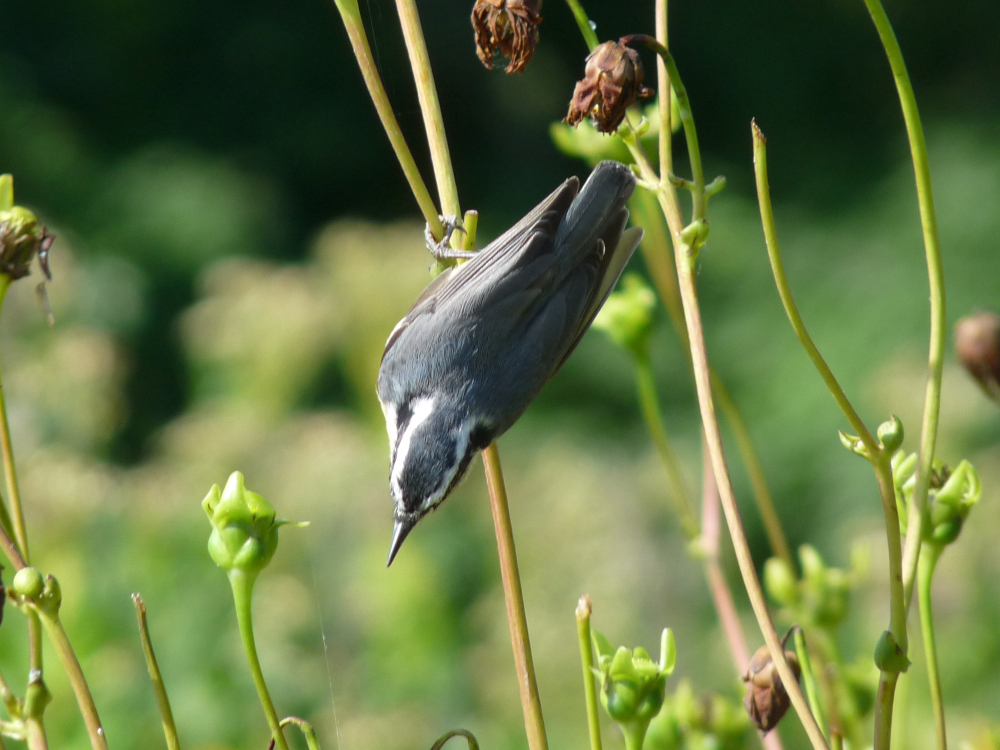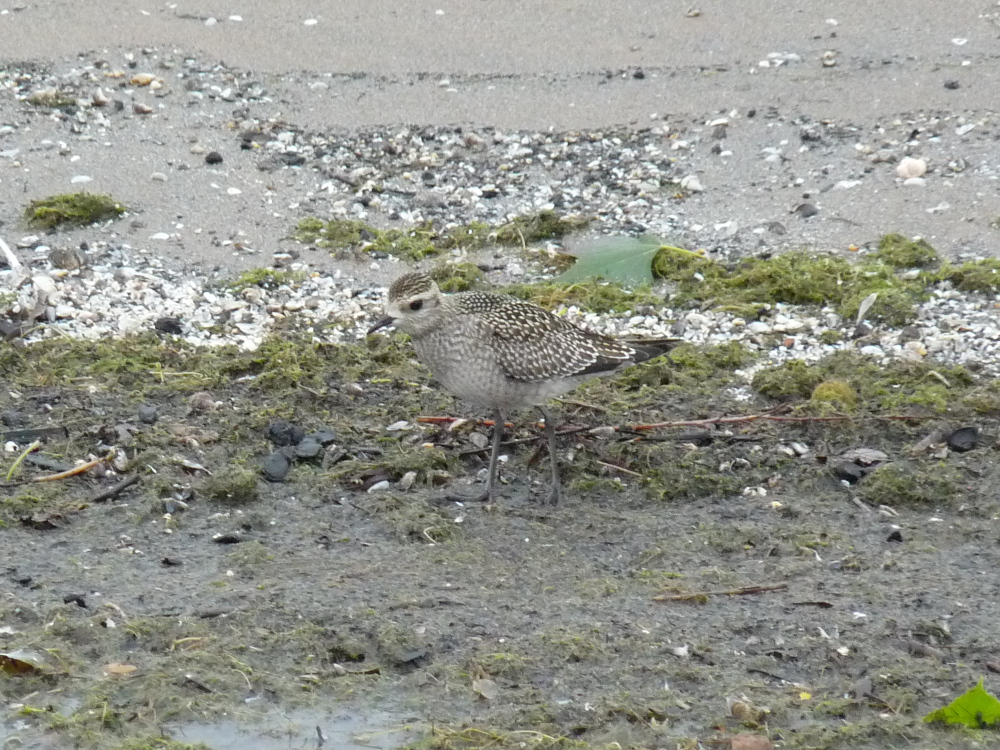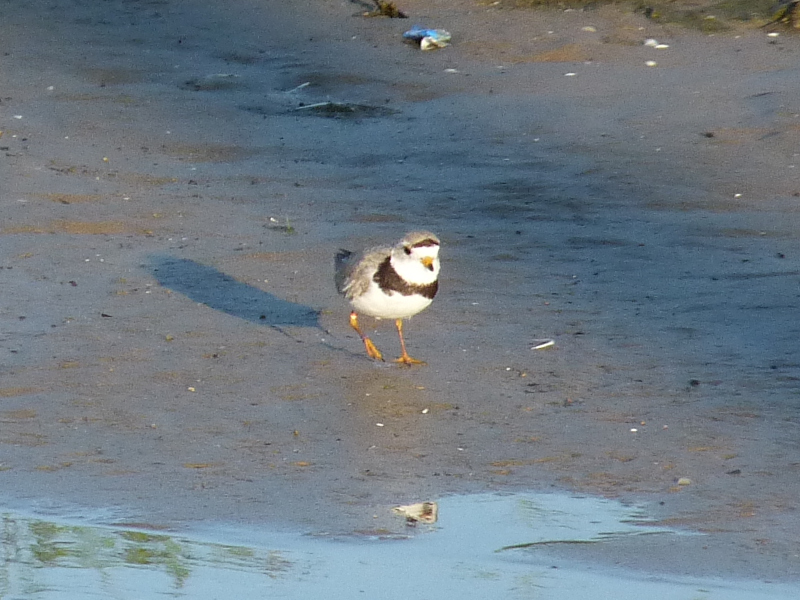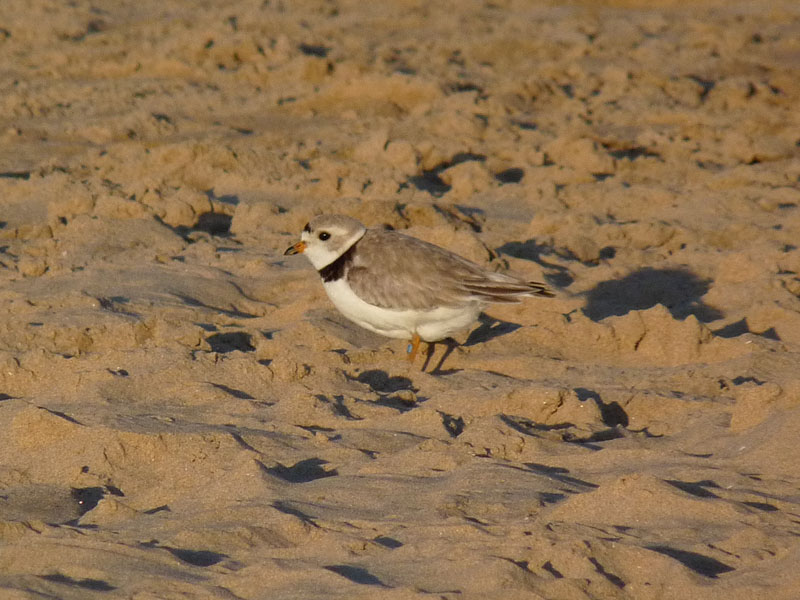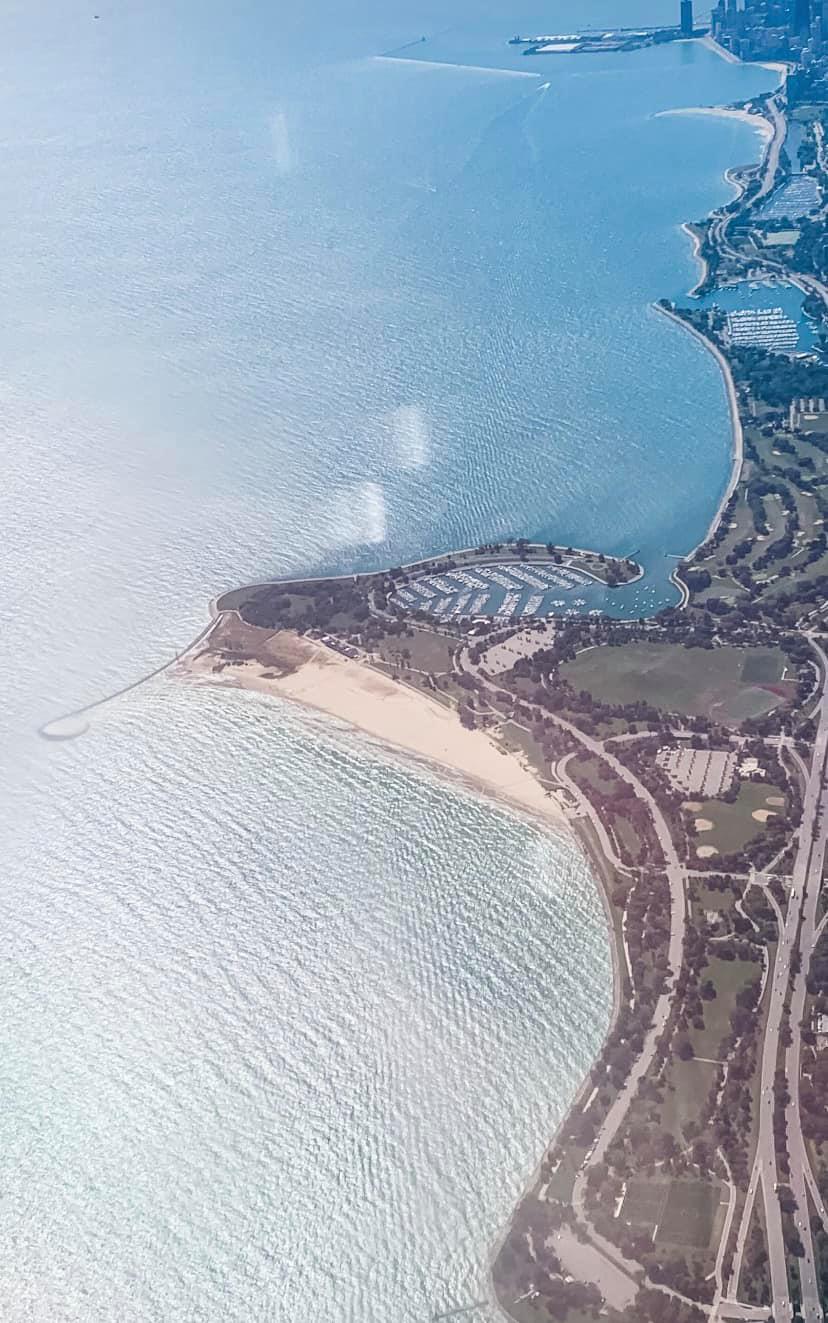For the second consecutive fall, Chicago is experiencing an invasion of Red-breasted Nuthatches. We’ve been seeing them daily and in good numbers at Montrose for most of September. Almost every flock of warblers has a Red-breasted Nuthatch or two associating with it. Back to back years with high numbers are atypical – usually we have to wait a few years between influxes. Some of the better places to see them are in the tree snags just west of the Magic Hedge and in the Honey Locusts south of the Magic Hedge.
Category Archives: History
Montrose Shorebirding – Quality Over Quantity
Thirty-eight species of shorebirds have been recorded at Montrose and of this 38 about 28 are regular and occur each year. We don’t get huge numbers however, usually no more than a few dozen individuals during the height of shorebird migration in May and August. What we lack in volume we more than make up for with great, close-up views. Look at the photo of the American Golden-Plover with this post. It’s from Montrose Beach and you can see how close the bird came to the photographer. It illustrates how tame and approachable these shorebirds can be. It’s also one reason why Montrose Beach is so popular with bird photographers. To see more Montrose shorebird pics on this blog, try a keyword search for “shorebirds”.
Imani Update, June 27, 2022
Imani, the young male Piping Plover and son of Rose and Monty, was still at Montrose in late June. His behavior has changed dramatically however. In late May and early June we would often hear him calling before we saw him and his slow motion flight display over the Dunes was an aerodynamic sight to behold. He was feeling his oats and ready to start a family and carry on Monty and Rose’s lineage. By late June the displaying and aggressive behavior towards other birds had stopped. He became harder to find and even disappeared for a few days. A female Piping Plover never showed up, which is probably the reason for Imani’s more subdued behavior. How long he will stay at Montrose is uncertain. Without a mate and the potential for a family he doesn’t have much incentive to hang around. The good news is that Imani is young, only about a year old, and there’s always next year.
Montrose Piping Plovers – Are They Worth It?
For the third consecutive year, Monty and Rose, our famous Piping Plover couple, nested and raised a family. This is an enormous conservation success story by any measure, the first time Piping Plovers have nested in Chicago in over 50 years.
The wide sandy beach at Montrose is near perfect Piping Plover habitat, but Montrose is far from ideal as a nesting location. Montrose is one of the most popular beaches in Chicago; all that human activity makes life difficult for any bird that nests on the open beach, like Piping Plovers do. The human animals aren’t the only challenge the plovers face. Montrose is also home to several mammalian predators, including Striped Skunks and Racoons, and they aren’t above preying on Piping Plover eggs. In fact, in 2021, a skunk ate some of the eggs from Monty and Rose’s first clutch. As if the mammalian predators weren’t enough, Montrose also hosts Peregrine Falcons, Cooper’s Hawks, Great Blue Herons, and gulls, all capable of dispatching the plovers and their young. With all these threats it’s a miracle Monty and Rose are able to nest and raise a family. The hard truth is that without human involvement the chances of them nesting successfully are small. Part of the beach got fenced off to keep people out in case Monty and Rose decided to nest there in 2021. Like the beach, the Dunes got fenced off to keep people out when Monty and Rose chose to nest there. To protect the eggs form predators, a steel cage was placed over the nest. Even with a cage a determined skunk managed to slip through and pilfer the eggs, forcing Monty and Rose to start over. A new, larger cage prevented this from happening again. To deter avian predators, biologists stationed a trap baited with a live pigeon in the Dunes. On top of all this, a cadre of dedicated volunteers spent hundreds of hours monitoring the plovers.
So the question is, is all this effort worth it? Is all the inconvenience worth it? I led field trips to Montrose in the spring of 2021 and I would take my guests down to the beach and Dunes, where I talked about the nesting Piping Plovers and the efforts to protect them. On one trip a client remarked “All this for a couple little birds?” It’s a legitimate question to ask. I think the answer is a resounding yes. Monty and Rose became celebrities in Chicago, raising awareness of their struggle and the plight of Piping Plovers on the Great Lakes. Their story was mentioned in the news and it became impossible not to sympathize with them. Their story also raised awareness of Montrose and how important it is for wildlife, especially the fragile Dunes.
The story of Monty and Rose is a story of hope and struggle, of people from different backgrounds working together to give a pair of underdogs a fighting chance at raising their kids in a not always hospitable environment. We look forward to their return.
A Bird’s-Eye View of Montrose Point
Have you ever wondered how Montrose Point looks to migrating birds? We know birds fly over Montrose, sometimes at great height, but it’s hard to envision how they perceive the place. Justine Neslund snapped this pic while flying out of Chicago in early September 2021. Montrose Point can clearly be seen in the photo. The landmarks we’re familiar with, including the beach, fishing pier, and harbor are obvious. This is how a high-flying migrant like an Osprey sees Montrose during the day. What’s striking is how much the Point protrudes into Lake Michigan, which is one reason why migrating birds are drawn to it.
Purple Martin Memories

Purple Martins staging at LaSalle Fish and Wildlife Area in Indiana (click to see the larger version)
Some of you may remember the hordes of Purple Martins that staged at Montrose in late summer in the 1970s and 1980s. It was quite a sight and quite a sound, as several thousand martins would roost in the tall cottonwoods and suddenly explode in noisy, excited flight. This spectacle is a thing of the past – most of the Purple Martins we see anymore are the nesting birds on the northwest side of the harbor, and they number less than 100. I took this photo of migrant Purple Martins staging at LaSalle Fish and Wildlife Area in Indiana in late August 2021. The photo reminds me of what we used to experience at Montrose.

